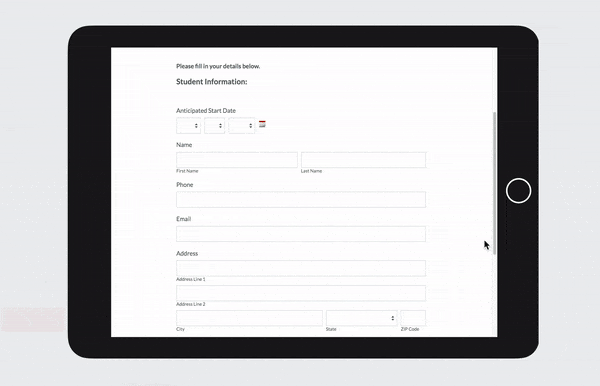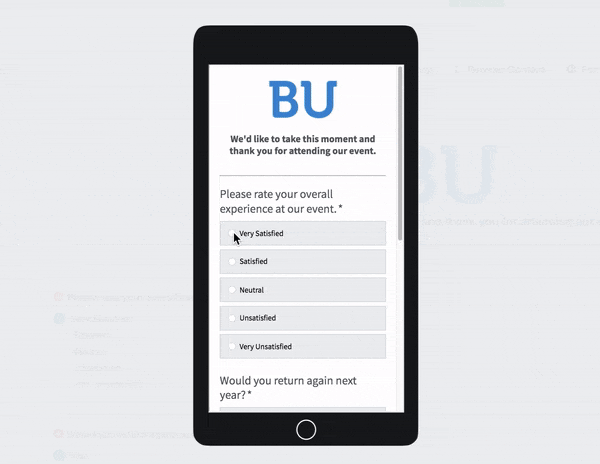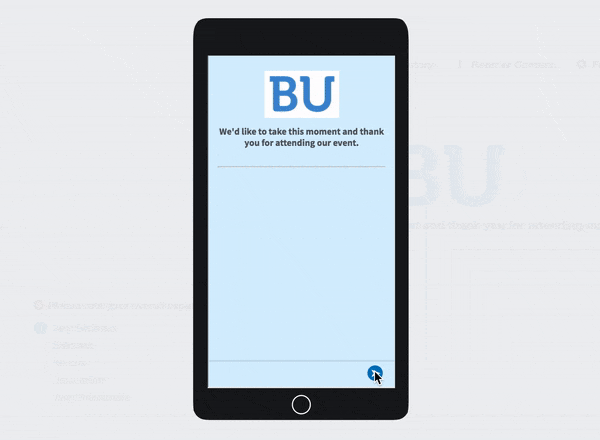Why Prospective Students Aren't Filling Out Your Forms
Recruiting students is no easy feat, especially when faced with declining enrollment numbers that make the market more competitive. Your ability to hit recruitment goals heavily
depends on the experience you create for prospective students. Many recruiters use
online forms to gather information around student interests, passions, and needs to create a tailored
experience.
However, if prospective students are hit with roadblocks while trying to fill out a form, you’re never going to capture their information. Don’t let a poor experience or clunky processes drag down your recruitment efforts.
If your team wants to see better conversions on your prospective student forms, it might be time to review your process for collecting information. Making small form improvements can drastically change your conversion rates, but you need to know what the issues are before you’re able to make any changes. Here are five reasons students might be bailing on your forms before hitting the submit button.
Your forms are not mobile-friendly.
Did you know that 94% of students own a smartphone, and more than half of students are online for 10 hours or more a day? If your forms are not mobile-friendly, you’re throwing a huge wrench in your recruitment efforts.
Understanding the types and ways students use digital technology will help craft your recruitment strategy. Students are more mobile now than ever, so it’s crucial that your forms are responsive across all devices. If a student clicks a link to a form and it doesn't fit well on their screen, they’ll close that window faster than they send a text message. This is especially true for fillable PDFs which are nearly impossible to easily complete using a phone or other mobile device.

You’re asking too many questions.
Students are often hopping between multiple devices, tabs, and communication streams at once. If your form is taking too much time to fill out, they’re highly likely to abandon. Your team needs to capture student information to be able to connect with them, but you don’t need to gather their entire life story at once.
Take some time to audit your forms. If any take more than 10 minutes to complete, re-assess the questions and remove any that are not absolutely necessary. It’s also important to take into consideration where the student is in your recruitment cycle—a student’s first form should be short and to the point. After repeatedly communicating with your school, they will be more likely to invest the time needed to complete a longer form.
Prospective students haven’t been reminded to fill out your form.
The students you are recruiting are still very focused on the deadlines at their current school. If you’re not keeping them in the loop about your university’s deadlines and requirements, form submissions will easily fall between the cracks.
Consider establishing email campaigns or using an automated form tool to keep prospective students on track about what forms they need to submit when. Provide calendar event reminders to help students get a clear view of upcoming deadlines. This can better prepare them for the more intense and time-consuming forms and applications.
The form doesn't use page breaks.
Sometimes it is necessary to ask a lot of questions on a form. When this is the case, it’s important to create a seamless and engaging experience that holds a student's attention and eases them through the questions.
Scrolling through hundreds of questions is never fun for anyone. Staring at a never-ending page is a sure-fire way to increase form abandonment. Your form design has a huge impact on submission rates. Here are a few tips to break up questions and boost conversions with an improved form layout:
- Use section breaks to group similar questions together
- Create a multi-page form to help avoid the infinite scroll
- Add a progress bar to encourage completion
- Pair your form with prefill capabilities to minimize typing
- Allow students to save their form and come back to it later
Here’s a form designed without page breaks:

Once page breaks are added, it’s a much less overwhelming experience, especially on mobile:

Too many form questions are marked as required.
The more time a student must dedicate to your form, the less likely they are to fill it out. Are all the questions on your form absolutely necessary? Those small asterisks that signal required questions can really turn people off. Try to keep required questions at 30 percent to help people feel more comfortable about what they need to fill out. Too many required questions can feel overwhelming.
Auditing your student recruitment forms and making some small changes can drastically improve submission rates. Sometimes all it takes is a small tweak to see form conversions soar. If you’re looking for more tips on how to better connect with students, check out Formstack’s education focused blog posts. You’ll find an array of smart and simple tips to help your recruiters better engage with prospective and current students.
Ready to turn your college or universtiy into a modern campus?
Check out Modern Campus CMS.
Last updated: February 5, 2021



